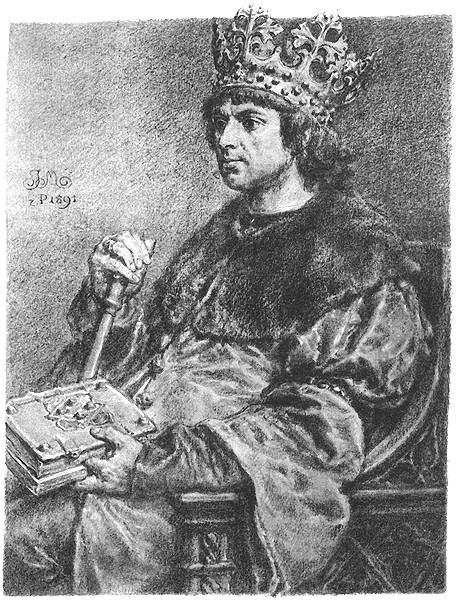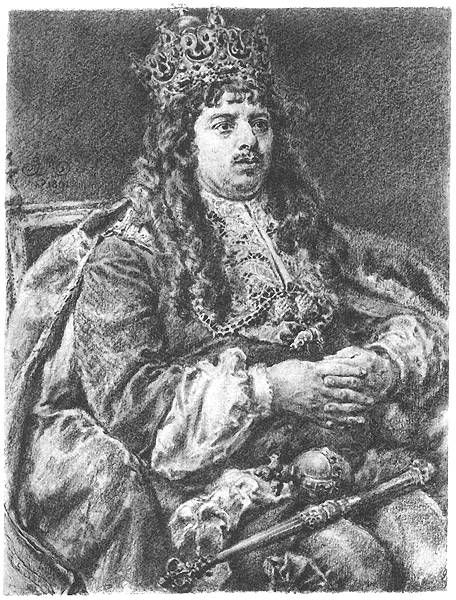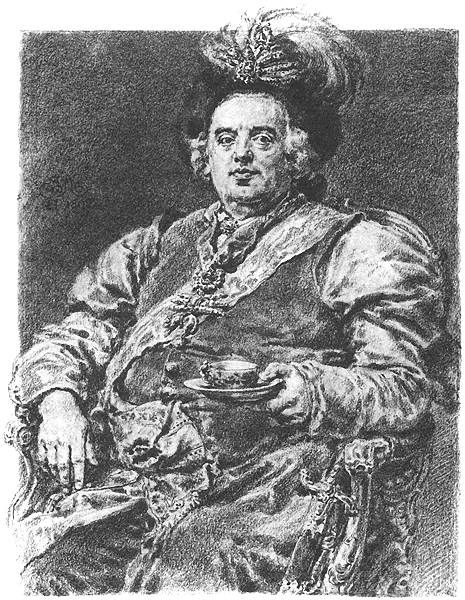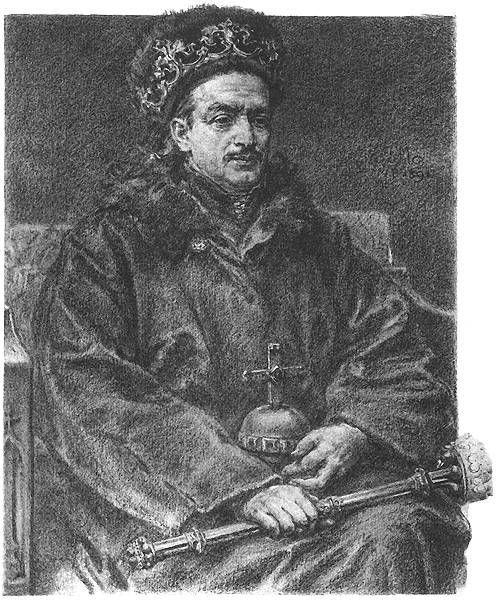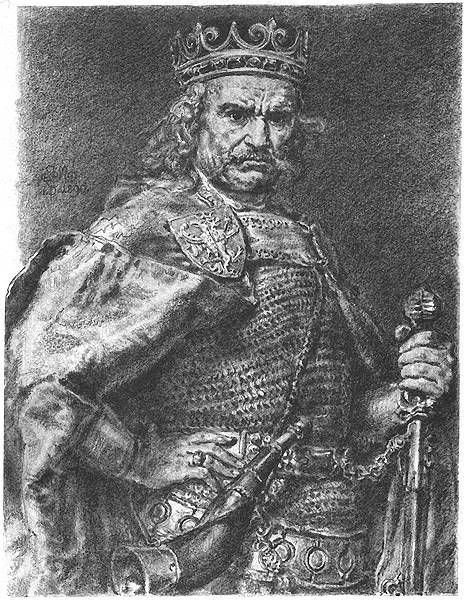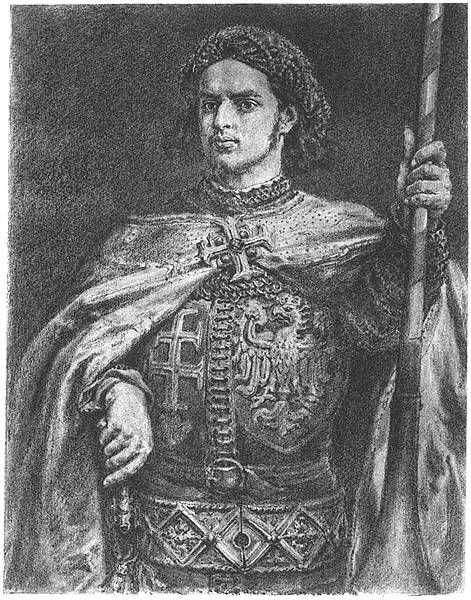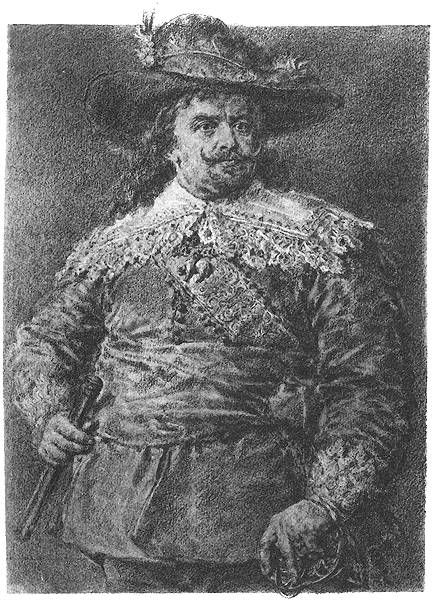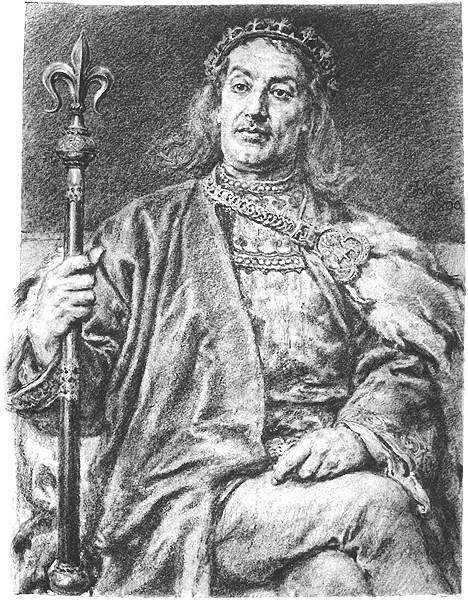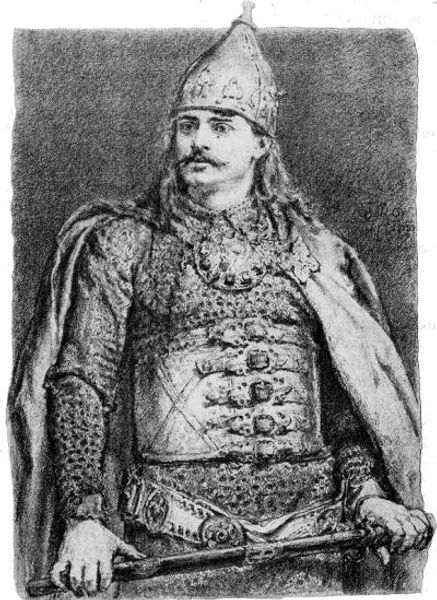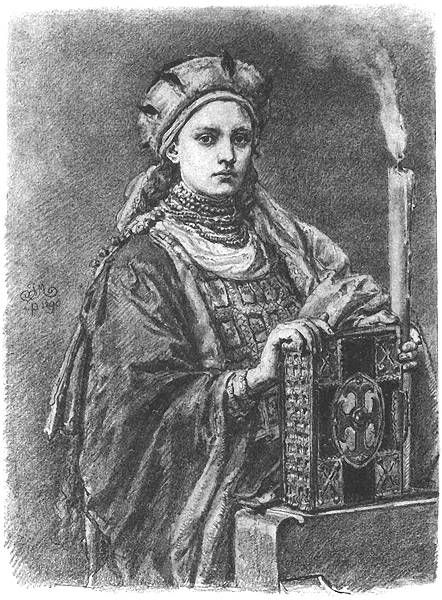
drawing, pencil
#
portrait
#
drawing
#
romanticism
#
pencil
#
surrealism
#
history-painting
Copyright: Public domain
Editor: This pencil drawing is called "Boleslaw V the Chaste" by Jan Matejko. It seems to depict Polish royalty, though its almost photorealistic style contrasts oddly with what I expect from historical portraiture. What strikes you most about it? Curator: The image powerfully illustrates the complex relationship between history, representation, and power. Matejko’s choice to portray Bolesław V through a Romantic lens speaks volumes about Polish national identity in the late 19th century, a period of cultural and political turmoil. Editor: How so? I would never have thought of it like that. Curator: The idealized depiction of historical figures often serves a purpose, right? Here, we see an attempt to construct a visual narrative that reinforces national pride during a time when Poland did not exist as a unified independent state. Consider the artist's intention: was he presenting a straightforward depiction or constructing a legend? Editor: So it's more about making a statement, connecting to an era, rather than the historical person itself. Does Matejko use this method a lot in his work? Curator: Exactly. He frequently employed this method, which aligns perfectly with the Romanticist goal of reminding and restoring national unity and glory in Polish collective identity through idealized heroic national figures. Boleslaw's presentation becomes part of that bigger national conversation. Editor: I’m starting to see the drawing now less as a portrait and more as an idea of leadership at a time when that leadership was missing. Curator: Precisely! And how this idea interacts with social identity then, and with our contemporary vision of this work. It is all a part of the bigger narrative, with a legacy that we’re currently interpreting. Editor: I will keep this in mind as I study other artwork of the period; thank you.
Comments
No comments
Be the first to comment and join the conversation on the ultimate creative platform.

